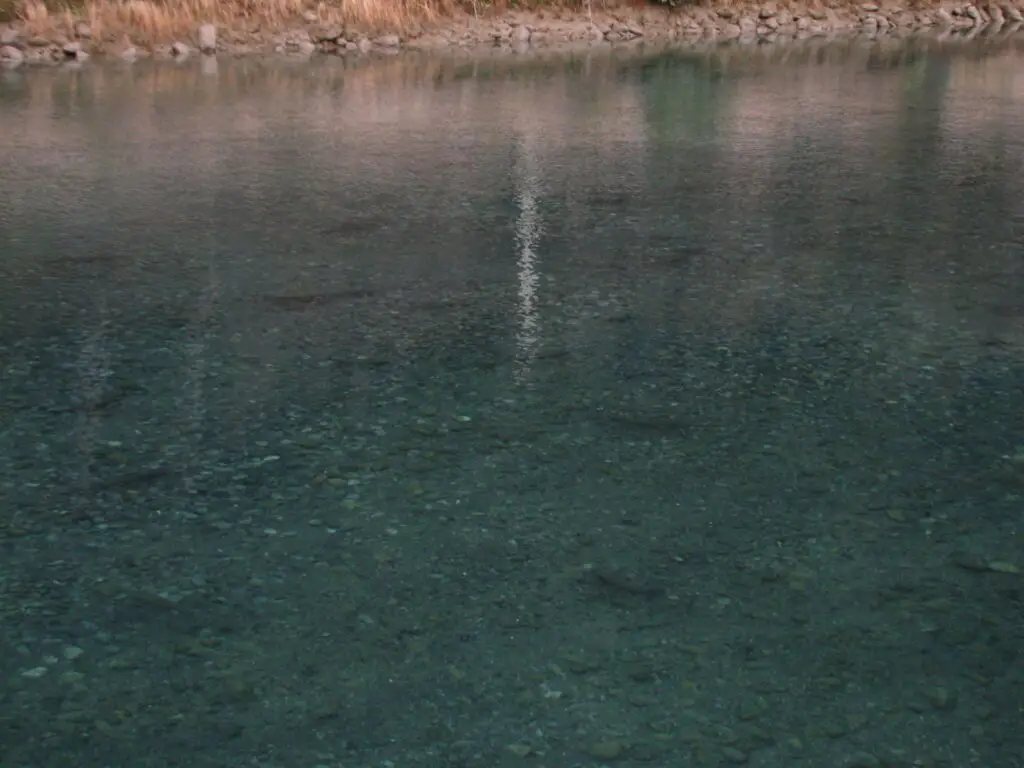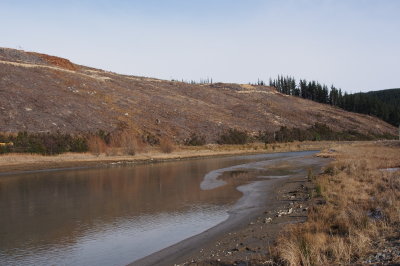While it is not common, Trout can spawn in lakes and ponds, even in those without inlet or outlet streams. While the success rate of spawning in such still water environments is low compared to flowing water, it can still be sufficient to sustain populations of wild trout.
When given the choice, trout typically prefer spawning in clean gravel beds located beneath clean, cold, oxygen-rich flowing water. They also show a preference for shallower water rather than deep areas, as this provides the best conditions for the hatching of fry.
However, when it comes to trout living in lakes and ponds, their spawning behavior may differ. Trout in ponds will still attempt to find suitable spawning locations near outflowing water, which could be a small tributary or even the outlet of the pond. For instance, I sometime fish a hydroelectric storage dam. The resident and holdover brown trout often gather to spawn at the mouth of the canal during winter.
This is where, the swift water from the canal spreads thin, creating conditions suitable for spawning. These trout seem to prefer the slightly slower and shallower water found at the mouth of the canal over the swift and deeper sections.
Now, how about ponds which lack tributaries that feed into or out of them. Where do trout spawn in such a water body?

Trout spawning in ponds without inlets or outlets.
Generally speaking, trout require clean gravel, and richly oxygenated, cold water to successfully spawn.
So what about trout ponds that have muddy and swampy margins and no clear source of flowing water. Yet they somehow manage to sustain populations of wild trout. Where do these trout spawn?
While writing this article, I suddenly thought of a small brook trout pond. This pond has no inlet to speak of, there is a feeder stream, but in all but the heaviest of rains it mostly oozes underground. The outlet again is an inconsistent swamp, far from suitable spawning habitat. Yet, the Brook trout population, despite no stocking for years is stable. The brook trout are able to find enough clean gravel, and oxygenated water to successfully spawn.
In such a pond, life always tries to find a way to survive, and trout are no exception. Trout in such ponds usually spawn close to freshwater eruption zones such as springs. Not only do the springs provide a flow of cold water, but the force is also often enough to clear the surrounding gravels of silk and muddy sediment. Hence, an area suitable for spawning is created.
If no such spring exists, out of desperation trout are even known to spawn on the lake shore, relying on the motion of the waves to keep the eggs oxygenated. I have not seen this firsthand, but apparently, it is a fairly common occurrence on many Scottish Lochs and Irish lakes.
These Loches typically have cool, windy conditions and plenty of rain. There are even reports of sea trout favoring spawning on gravel beaches rather than the inlet streams.
Spawning can also occur deep within lakes where there is upwelling from bottom fissures. The latter is typical of spawning in many volcanic-region lakes in Iceland where water flow is underground.
Trout and char of the world. Bethesda, Maryland: American Fisheries Society.
Spawning of lake-resident S. trutta occurs on shoreline gravels where there is sufficient wave action or diffuse water flow from the surrounding land to provide oxygenation. This type of spawning is typical of many small upland lakes
Population genetics and Genetic Stock Identification of anadromous Salmo trutta from the Irish Sea and adjacent areas, using microsatellite DNA loci. In G. Harris (Ed.), Sea trout: Management & science
In certain parts of Europe, sub-species of brown trout have developed fascinating adaptations when it comes to spawning within lakes. One striking example is the Lake Sevan trout, which used to consist of four distinct forms.
Two of these forms would spawn in the rivers and streams that flow into the lake, while the other two forms, known locally as the Winter Ishkhan and the Bojak, would spend their entire lives in the lake and spawn in the littoral zone—the area close to the shore where wind action provides adequate oxygenation for the eggs.
Brown trout residing in Lake Garda, Northern Italy, exhibit a unique spawning behavior. They prefer to spawn around submerged alluvial fans and coastal cliffs at depths ranging from 50 to 200 meters (160 to 650 feet). This choice is believed to be driven by their search for oxygenated water from spring eruption zones.
Will trout spawn in a private pond?
A question often asked by anyone who recently stocked trout in a private pond is whether they will spawn and potentially become a self-sustaining population?
To be honest, unless the pond is fed by a suitable cold-water stream. It is highly unlikely that trout will spawn successfully in a private pond.
There are a couple of reasons why trout spawning in a private pond is challenging. Firstly, many stock trout that are commonly used for pond stocking are infertile. Even if the conditions in the pond were perfect for spawning, these trout are not going to produce viable eggs.
Secondly, most private ponds lack the necessary components for successful trout spawning. Clean gravel and cool enough water which is crucial for the eggs to have a chance of hatching.
In many private ponds, the water is not cool enough, and the gravel substrate is usually more muddy or silky than clean. Additionally, ponds often have lower oxygen levels compared to flowing streams, which can further hinder successful egg development.
In summary, while it is not impossible for trout to spawn in a private pond, the chances of successful reproduction and establishing a self-sustaining population are quite low, unless the pond is fed by a suitable cold-water stream and has the necessary spawning conditions in place.

